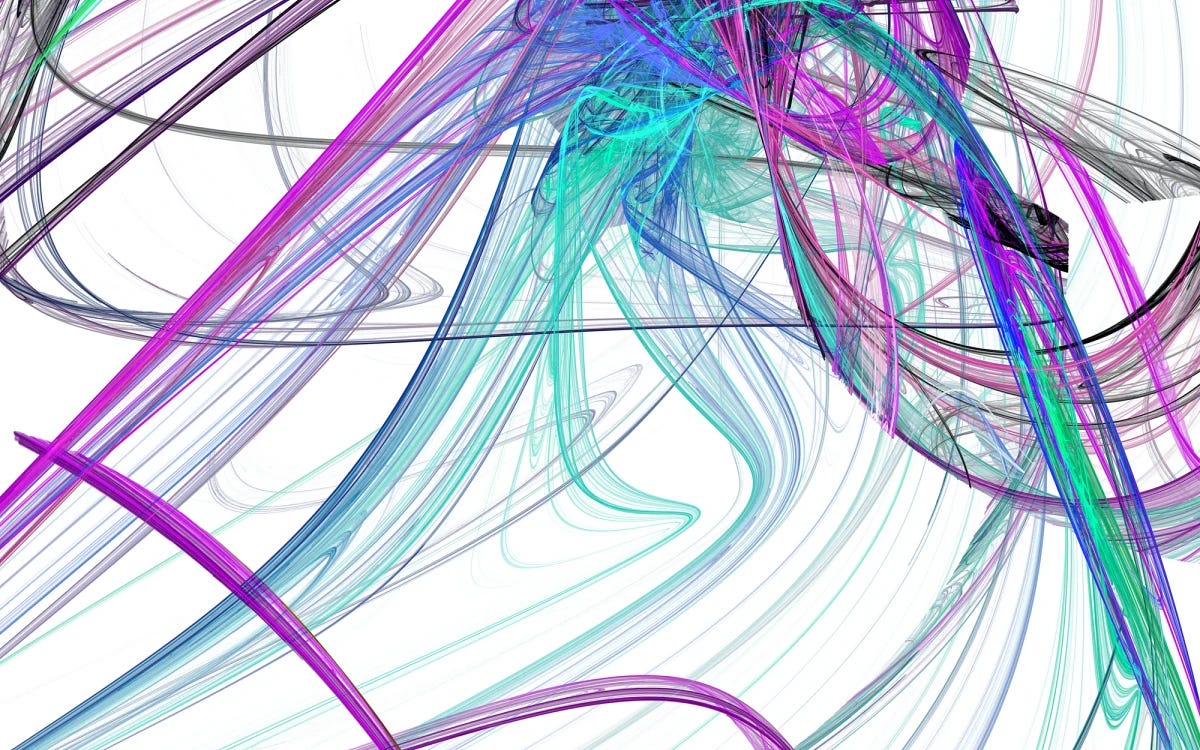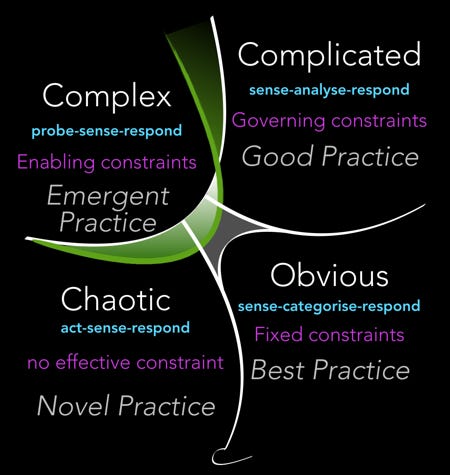The Cynefin framework – and how it helps us understand complexity
I write and talk a lot about complexity and working and leading in complex environments. And in doing so, I invariably refer to Dave Snowden’s Cynefin framework.
Cynefin (pronounced Ku-nev-in) is a Welsh word meaning something like ‘habitat’, but which also implies multiple unknowable factors in our environment and our experience.
Snowden first introduced the framework as a decision-making framework to a wider audience in a classic Harvard Business review article in 2007.
Since then Snowden has continued to refine his thinking on Cynefin as a sense-making tool. There is a book on Cynefin, but a lot of the latest ideas are on Snowden’s blog.
Dave Snowden on the Cynefin framework
The Cynefin framework is a fantastic aid for distinguishing between the predictable and the unpredictable and between complicated and complex spaces.
It helps individuals and organisations make decisions by categorising situations into five domains based on cause-and-effect relationships.
The framework is based on the premise that different situations require different approaches to decision-making, and that there is no one-size-fits-all solution to every problem.
The five domains of the Cynefin framework are Simple, Complicated, Complex, Chaotic, and Disorder.
The Simple domain is characterised by clear cause-and-effect relationships, and solutions are often obvious.
The Complicated domain is characterised by multiple cause-and-effect relationships, and solutions require expert analysis.
The Complex domain is characterised by emergent cause-and-effect relationships, and solutions require experimentation and adaptation.
The Chaotic domain is characterised by a lack of cause-and-effect relationships, and solutions require immediate action to stabilize the situation.
The Disordered domain is characterised by uncertainty about which domain a situation belongs to, and solutions require first understanding the situation before proceeding.
The ability to readily make these distinctions is critical to leadership, complex problem solving, decision making and action planning in organisation settings – and in life generally. This because this understanding allows us to respond in the right way to the circumsatnces or difficulties we are facing.
But the framework is more than a simple diagrammatic, Cynefin recognises the shifting and evolving circumstances in which we operate.
In this post, rather than try to fully explain Cynefin myself, I’ve gone to the source and included Snowden’s latest visual representation of the framework below, as well as Dave Snowden’s own video about Cynefin, which is now a few years old.
I’ve also included Jennifer Garvey Berger’s video on Cynefin below, which is an excellent introduction to the framework.
I’ve also included Jennifer Garvey Berger’s video on Cynefin below, which is an excellent introduction to the framework.
Jennifer Garvey Berger on the Cynefin framework
Related Posts
You can find my other posts on complexity here.




